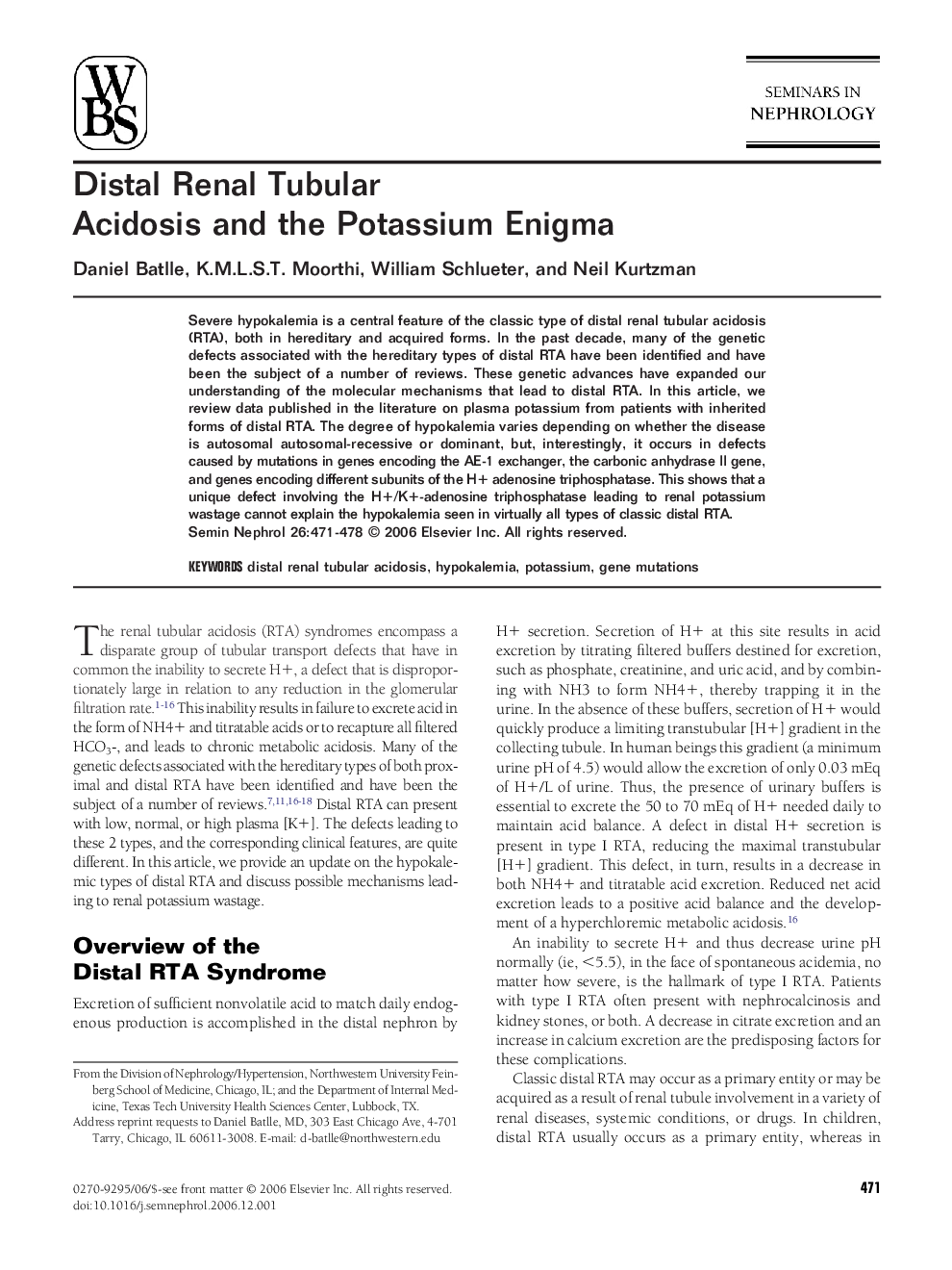| Article ID | Journal | Published Year | Pages | File Type |
|---|---|---|---|---|
| 3897759 | Seminars in Nephrology | 2006 | 8 Pages |
Severe hypokalemia is a central feature of the classic type of distal renal tubular acidosis (RTA), both in hereditary and acquired forms. In the past decade, many of the genetic defects associated with the hereditary types of distal RTA have been identified and have been the subject of a number of reviews. These genetic advances have expanded our understanding of the molecular mechanisms that lead to distal RTA. In this article, we review data published in the literature on plasma potassium from patients with inherited forms of distal RTA. The degree of hypokalemia varies depending on whether the disease is autosomal autosomal-recessive or dominant, but, interestingly, it occurs in defects caused by mutations in genes encoding the AE-1 exchanger, the carbonic anhydrase II gene, and genes encoding different subunits of the H+ adenosine triphosphatase. This shows that a unique defect involving the H+/K+-adenosine triphosphatase leading to renal potassium wastage cannot explain the hypokalemia seen in virtually all types of classic distal RTA.
